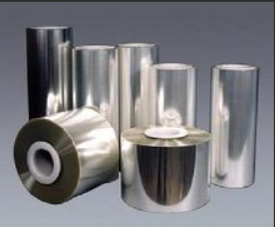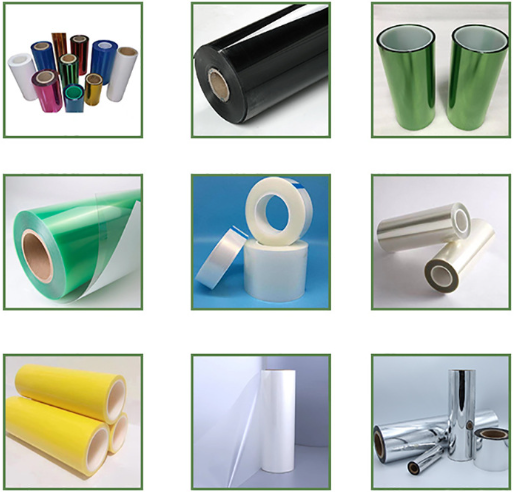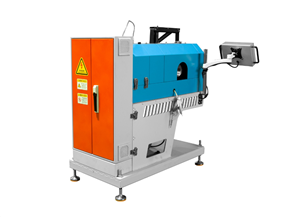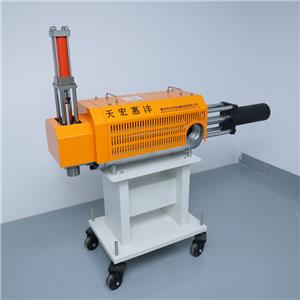Polyester Film (BOPET): The Diverse Charm of High-Performance Material
I. Basic Concepts and Core Characteristics of BOPET
BOPET (Biaxially Oriented Polyethylene Terephthalate Film) is a film material made from polyethylene terephthalate (PET) resin through biaxial stretching processes. Its unique molecular orientation structure endows it with excellent comprehensive properties, making it an indispensable high-performance basic material in modern industry.

Core Performance Advantages:
Exceptional Mechanical Strength
Tensile strength can reach over 200MPa, more than 10 times that of ordinary PE film, with excellent tear resistance and foldability, suitable for scenarios requiring high-strength support (e.g., flexible circuit board substrates).
High Temperature Resistance and Dimensional Stability
Long-term service temperature up to 120℃, short-term resistance up to 150℃, low thermal shrinkage rate (<1% at 120℃), stable in high-temperature welding of electronic components or outdoor environments of photovoltaic modules.
High Transparency and Optical PropertiesLight transmittance exceeds 90%, haze <1%, usable as optical films (e.g., polarizer substrates, touch screen protective layers), meeting clarity requirements for precision optical devices.
Excellent Barrier Properties
Oxygen and water vapor barrier capacity is 5-10 times that of ordinary plastic films, commonly used in food packaging (prolonging shelf life) and pharmaceutical packaging (anti-oxidation).
Outstanding Electrical Insulation
Breakdown voltage >20kV/mm, volume resistivity >10¹⁴Ω·cm, an ideal insulating material for electrical equipment such as motors and transformers.
II. Diverse Application Scenarios of BOPET: From Traditional to Cutting-Edge
BOPET's performance advantages enable "cross-border" applications in multiple fields. The core application areas and cases are as follows:

1. Electronics and Electrical Field: Supporting High-End Manufacturing
| Application Direction | Specific Scenarios | Performance Value Points |
| Flexible Circuit Substrate | FPC (Flexible Printed Circuit Board), OLED screen substrate | Thin, bend-resistant, dimensional stability |
| Insulating Material | Motor slot insulation paper, cable cladding | High insulation, high temperature resistance |
| Protective Film | Anti-scratch films for mobile phones/tablets, camera lens protection | High light transmittance, abrasion resistance |
| Battery Components | Lithium battery separator coating substrate, solid-state battery packaging material | Barrier property, high temperature resistance, chemical stability |
2. Packaging Field: Reshaping Industry Standards
Food and Pharmaceutical Packaging:
Replacing traditional PVC films for vacuum packaging of potato chips and nuts, with high barrier properties to prevent oil oxidation; in pharmaceutical packaging, BOPET combined with aluminum foil can isolate moisture and oxygen, ensuring drug validity.
Smart Packaging:
BOPET films with printable RFID tags prepared by coating technology, used for logistics tracking and anti-counterfeiting (e.g., high-end wine and luxury packaging).
3. Optical and Display Field: Driving Visual Revolution
Polarizer Substrate:
As the support film for LCD screen polarizers, requiring thickness uniformity of ±1%, BOPET meets high-specification requirements (e.g., 8K TVs, vehicle displays) through precise stretching processes.
Optical Compensation Film:
In OLED screens, BOPET base films can be used as phase difference films after orientation treatment, improving screen viewing angle and color performance.
4. New Energy Field: Boosting Green Transition
Photovoltaic Backsheet:
BOPET combined with fluorine film to make photovoltaic backsheets, with weather resistance of over 25 years, penetrating more than 60% of global photovoltaic modules (2024 data).
Lithium Battery Separator:
BOPET separators coated with ceramic or PVDF can enhance lithium battery safety, with puncture resistance exceeding 300N, suitable for high-energy density batteries.
5. Other Innovative Applications
Medical Field:
Degradable BOPET coatings for surgical sutures and drug sustained-release carriers;
Aerospace:
As a lightweight composite material substrate for satellite solar panel support films;
Flexible Electronics:
BOPET-based flexible sensors that can adhere to the skin for physiological index monitoring.
III. Technical Iteration and Market Trends of BOPET
1. Process Upgrades: From "General" to "Customized"
Ultra-thinning:
BOPET films below 2μm have been mass-produced (e.g., Toray A4300 series in Japan), used for semiconductor packaging carrier tapes;
Functional Modification:
Expanding application boundaries through surface coating (e.g., antistatic, antifog, antibacterial coatings), such as antifog BOPET for cold chain food packaging.
2. Trend of Green Manufacturing
Recycling technology breakthroughs:The EU promotes closed-loop recycling of PET films, and some enterprises have achieved waste film regeneration to prepare optical-grade BOPET (e.g., Teijin Group's ECO Circle technology);
Exploration of bio-based raw materials:R&D of bio-based BOPET using plant-based PTA as raw material is accelerating, with carbon footprint reduced by over 40% compared to traditional processes.
3. Market Growth Engines
According to Grand View Research data, the global BOPET film market size reached $18.5 billion in 2024, with an expected compound annual growth rate of over 7% from 2025 to 2030. As the production hub (accounting for 60% of global capacity), China will continue to lead in demand from new energy and electronic display fields.

IV. Conclusion: The "Swiss Army Knife" of High-Performance Materials
With its "rigid-flexible" performance combination and continuously innovative technical potential, BOPET has upgraded from a traditional packaging material to a key basic material supporting high-end manufacturing. From smartphone screens to photovoltaic power stations, from lithium batteries to aerospace equipment, it interprets the infinite possibilities of materials science with its diverse charm. With the deepening of green manufacturing and functional technologies, BOPET will play a more important role in future intelligent manufacturing and sustainable development.




